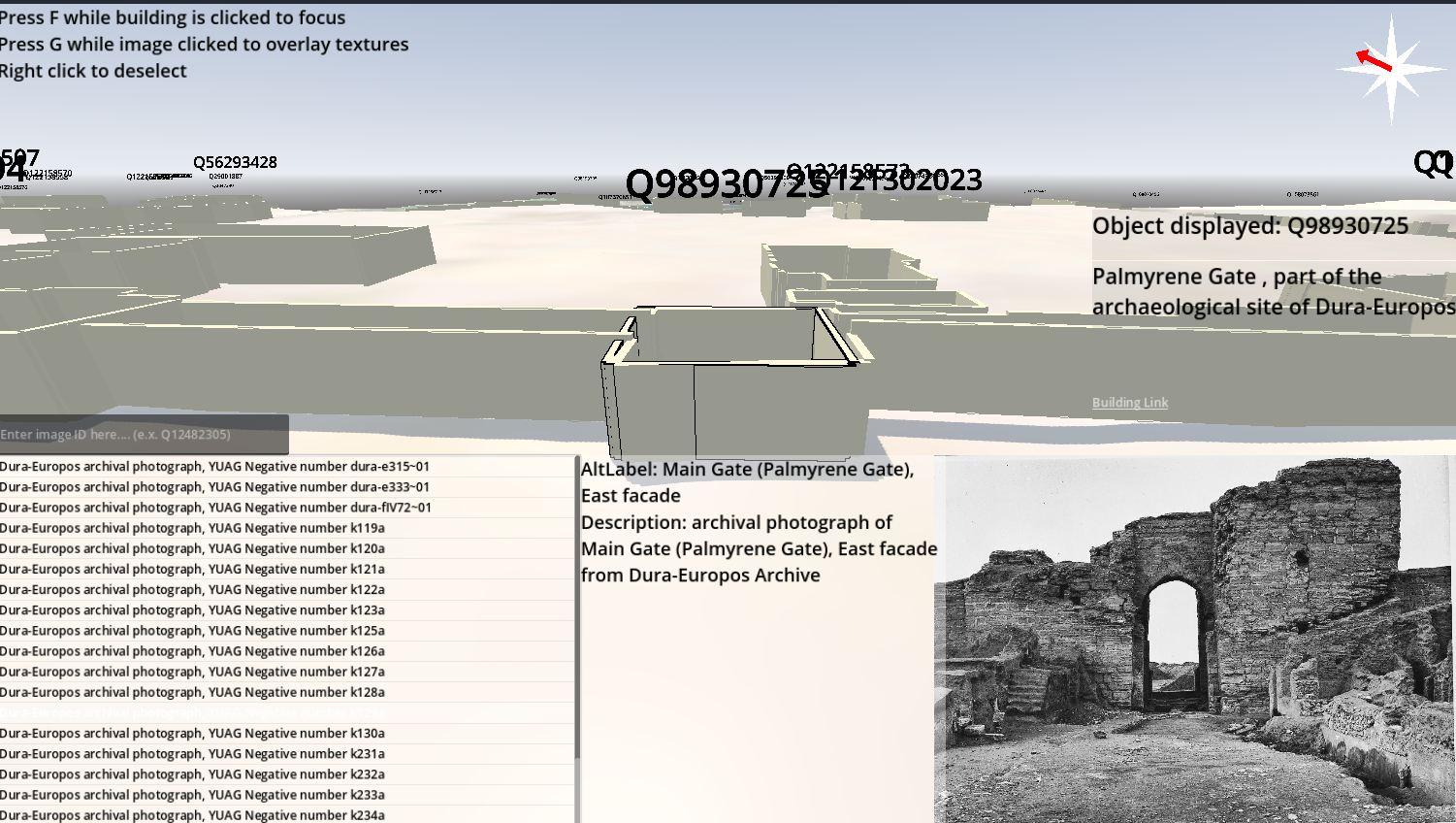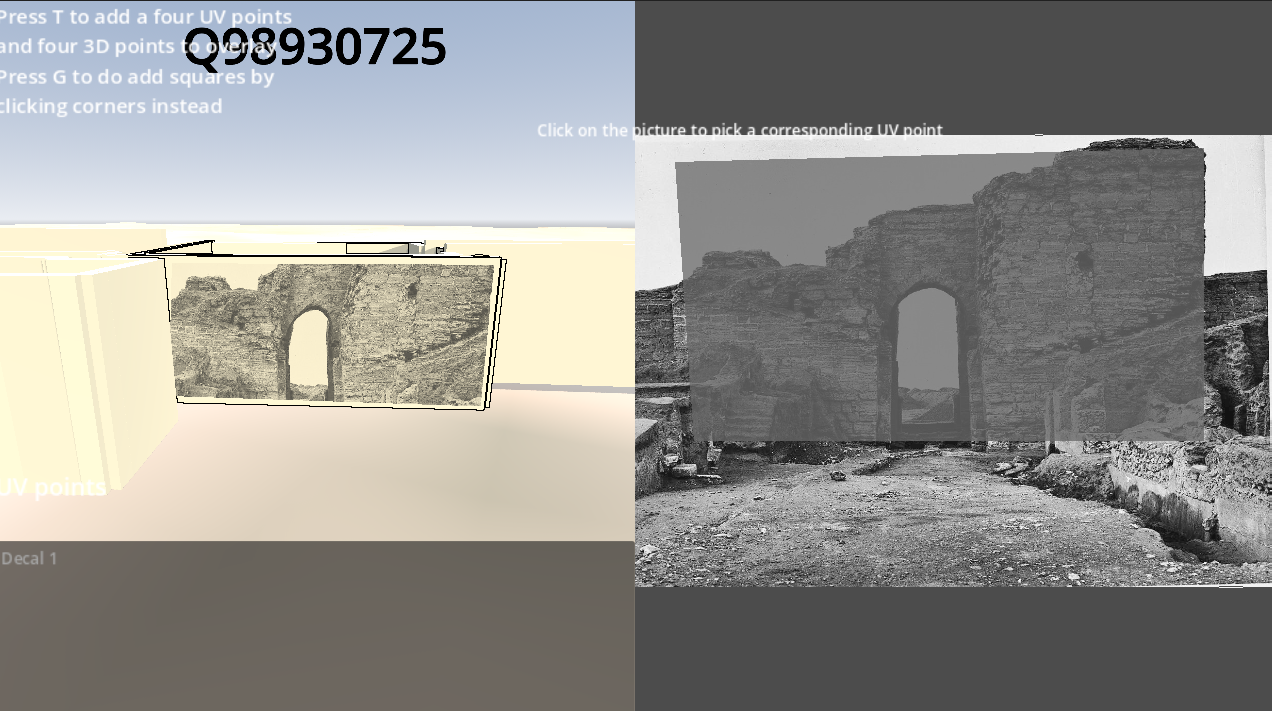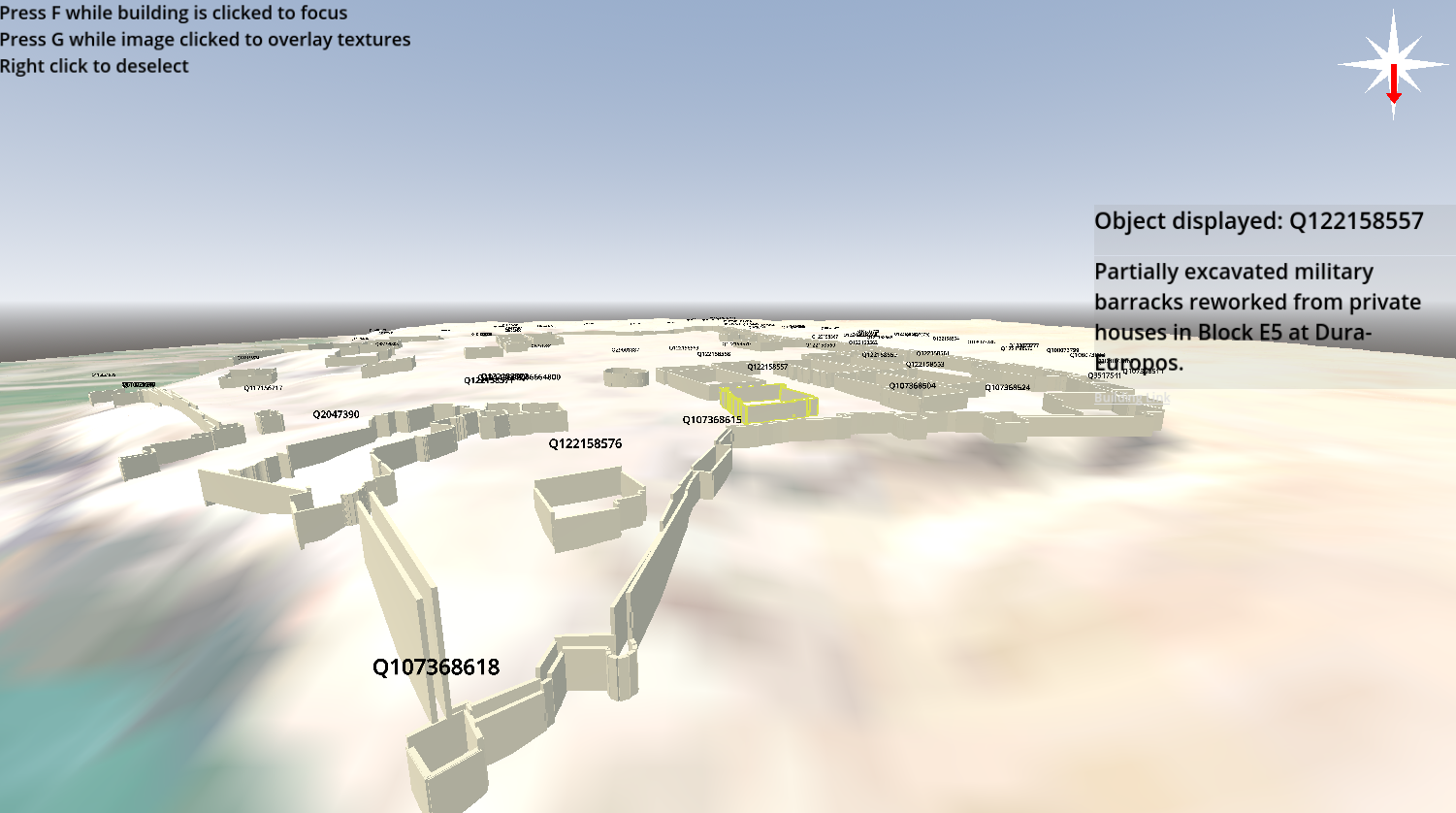GAMIFYING ARCHAEOLOGY
An interactive 3D representation of Dura-Europos
Ali Hafez
Advisors: Holly Rushmeier,
Mike Shah


Abstract
In the 1920s and 30s, Yale and other university archaeologists excavated the site of the ancient metropolis called ”Dura-Europos” in southeastern Syria. In the hundred years since, the scattering of artifacts, degradation and remoteness of the site, and instability in the region have necessitated a digital archive. Yale and Bard universities have been the primary patrons of this archive, with photographs and information recorded from the initial excavations, organized using linked open data. While there is a large amount of data available, the site is enormous and the sparse photography has taken a long time to organize so far. Due to the civil war in Syria, the site was heavily looted and destroyed, and access to and protection for the site has only recently resumed, and the Dura-Europos digital archive is the closest thing we have to the site in its original, recently unearthed state. Using the photography, documentation of artifacts, and other information gathered about the site, we create an interactive, 3D representation that can help users, from laypeo- ple to academics, assemble the site spatially and better represent the site and its dataset. This representation is not only a procedurally-generated reconstruction of the site in 3D, but also allows users to display images and pictures taken from the site. Then, users can ”paint” pictures taken of artifacts or from sites onto the walls of structures, and export these modified structures as 3D models. Eventually, this software will allow users to participate in refining and rebuilding the digital site, from placing artifacts in their build- ings to making custom geometry for structures, creating a better virtual representation of Dura-Europos for all.
